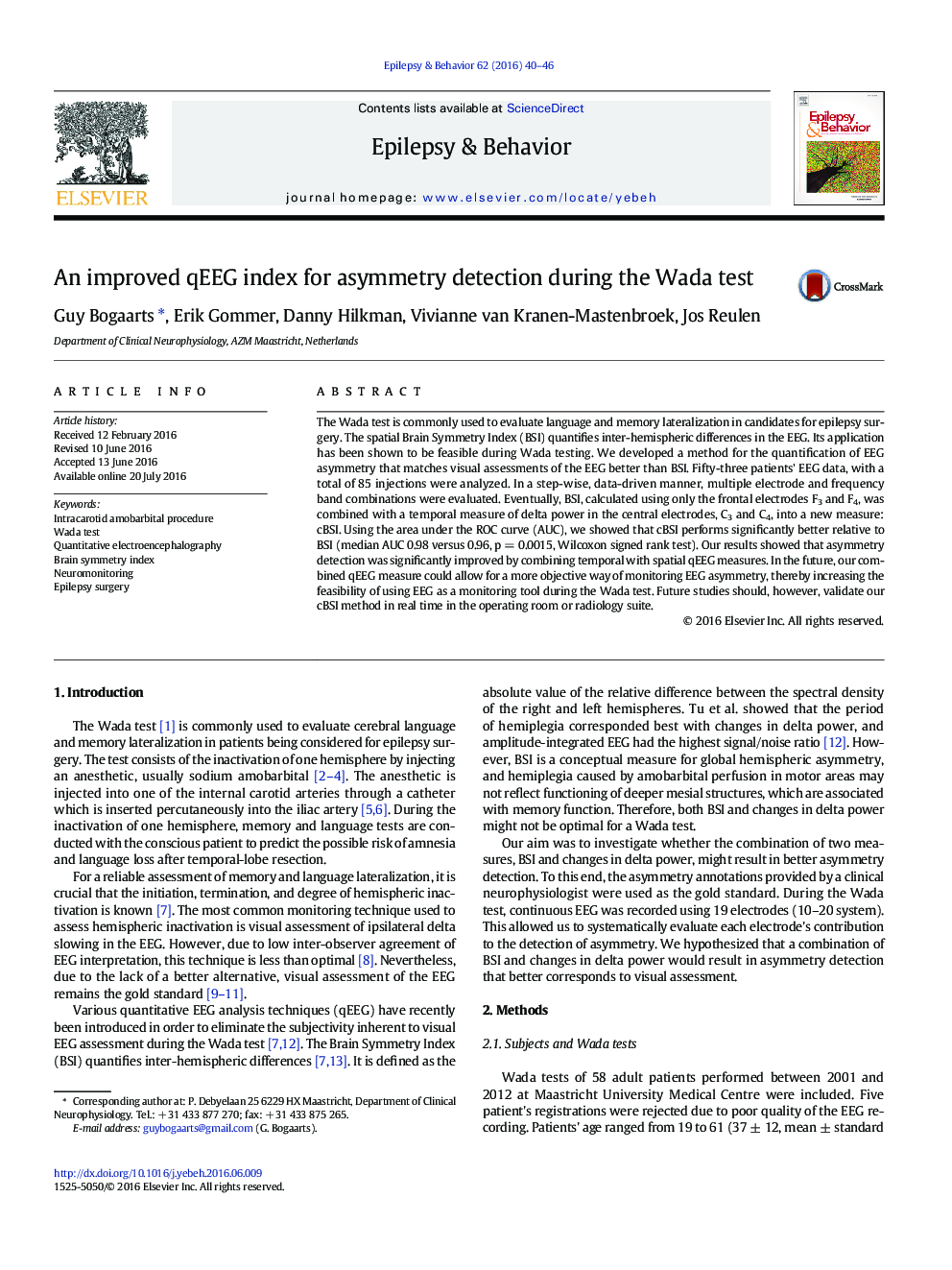| Article ID | Journal | Published Year | Pages | File Type |
|---|---|---|---|---|
| 6009750 | Epilepsy & Behavior | 2016 | 7 Pages |
â¢A QEEG measure combining temporal and spatial EEG changes during Wada testing better agrees with visual assessment of EEG slowing.â¢Quantification of EEG changes per EEG channel and frequency band during the Wada test can reduce subjectivity of EEG interpretation.â¢Not all EEG electrodes and frequency bands are equally important for the detection of EEG slowing during Wada testing
The Wada test is commonly used to evaluate language and memory lateralization in candidates for epilepsy surgery. The spatial Brain Symmetry Index (BSI) quantifies inter-hemispheric differences in the EEG. Its application has been shown to be feasible during Wada testing. We developed a method for the quantification of EEG asymmetry that matches visual assessments of the EEG better than BSI. Fifty-three patients' EEG data, with a total of 85 injections were analyzed. In a step-wise, data-driven manner, multiple electrode and frequency band combinations were evaluated. Eventually, BSI, calculated using only the frontal electrodes F3 and F4, was combined with a temporal measure of delta power in the central electrodes, C3 and C4, into a new measure: cBSI. Using the area under the ROC curve (AUC), we showed that cBSI performs significantly better relative to BSI (median AUC 0.98 versus 0.96, p = 0.0015, Wilcoxon signed rank test). Our results showed that asymmetry detection was significantly improved by combining temporal with spatial qEEG measures. In the future, our combined qEEG measure could allow for a more objective way of monitoring EEG asymmetry, thereby increasing the feasibility of using EEG as a monitoring tool during the Wada test. Future studies should, however, validate our cBSI method in real time in the operating room or radiology suite.
